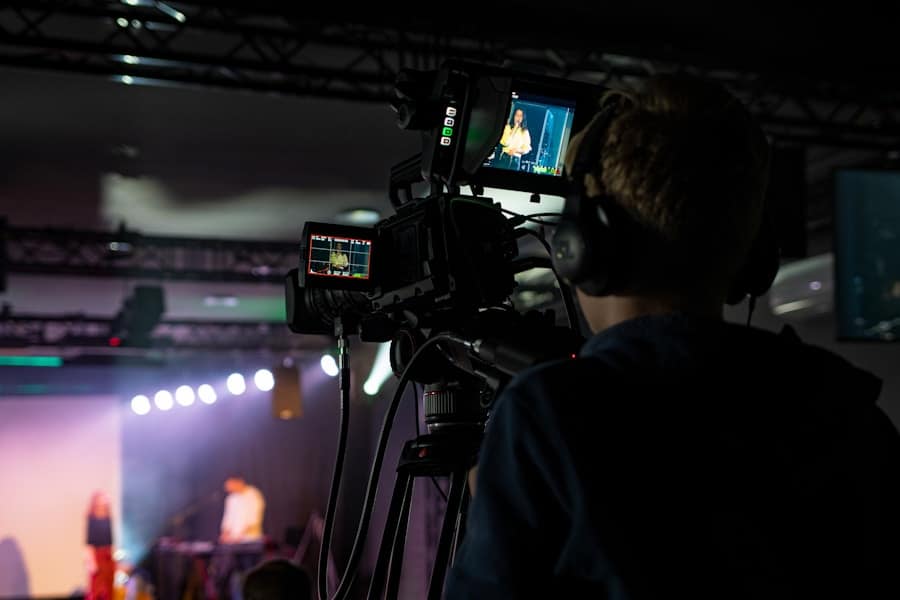The advent of 5G technology marks a significant leap forward in the realm of telecommunications, promising to reshape how we connect, communicate, and consume content. Unlike its predecessors, 5G is designed to deliver ultra-fast data speeds, reduced latency, and the ability to connect a vast number of devices simultaneously. This next-generation network operates on a higher frequency spectrum, which allows for greater bandwidth and improved performance in densely populated areas.
The implications of 5G extend far beyond mere speed; it is poised to enable a new era of innovation across various sectors, including healthcare, transportation, and entertainment. In the context of live event broadcasting, 5G technology offers transformative capabilities that can enhance the viewer experience and streamline production processes. As audiences increasingly demand high-quality content delivered in real-time, the need for robust and reliable connectivity becomes paramount.
With 5G, broadcasters can leverage advanced technologies such as augmented reality (AR) and virtual reality (VR), creating immersive experiences that engage viewers like never before. The integration of 5G into live event broadcasting not only enhances the quality of the broadcast but also opens up new avenues for creativity and audience interaction.
Key Takeaways
- 5G technology is the next generation of mobile internet connectivity, offering faster speeds and more reliable connections.
- 5G provides advantages in live event broadcasts by enabling high-quality, low-latency video streaming and improved audience engagement.
- Improved connectivity and bandwidth with 5G allows for seamless integration of multiple camera setups, enhancing the viewing experience for live event broadcasts.
- 5G technology enhances video quality and reduces latency, resulting in a more immersive and engaging experience for viewers of live events.
- Real-time editing and production can be achieved with 5G, allowing for more dynamic and interactive live event broadcasts.
Advantages of 5G in Live Event Broadcasts
The advantages of 5G in live event broadcasts are manifold, fundamentally altering how events are produced and consumed. One of the most significant benefits is the ability to transmit high-definition video streams with minimal delay. Traditional broadcasting methods often struggle with latency issues, which can detract from the viewer experience, especially during live events where timing is crucial.
With 5G, broadcasters can achieve near-instantaneous transmission of video feeds, ensuring that audiences receive content in real-time without noticeable lag. Moreover, 5G’s enhanced capacity allows for multiple high-definition streams to be transmitted simultaneously without compromising quality. This capability is particularly beneficial for multi-camera setups commonly used in live events such as concerts, sports, and conferences.
By utilizing 5G networks, producers can seamlessly switch between different camera angles and perspectives, providing viewers with a more dynamic and engaging experience. The ability to deliver multiple angles in real-time not only enhances storytelling but also allows for greater audience immersion.
Improved Connectivity and Bandwidth for Multi-Camera Setups
Multi-camera setups have become a staple in live event broadcasting, enabling producers to capture diverse angles and perspectives that enrich the viewing experience. However, these setups require substantial bandwidth to transmit multiple video feeds simultaneously. Traditional broadcasting methods often face challenges in maintaining stable connections when multiple cameras are in use, leading to potential disruptions or degraded video quality.
The introduction of 5G technology addresses these challenges head-on. With its significantly increased bandwidth capabilities, 5G allows broadcasters to connect numerous cameras without the risk of overloading the network. This means that event producers can deploy multiple cameras across various locations—such as different stages at a music festival or various vantage points at a sports arena—without worrying about connectivity issues.
For instance, during a large-scale event like the Super Bowl, producers can utilize 5G to stream feeds from cameras positioned in the stands, on the field, and even from drones flying overhead.
Enhanced Video Quality and Low Latency with 5G
One of the hallmark features of 5G technology is its ability to deliver enhanced video quality alongside low latency. In live event broadcasting, where every second counts, the importance of low latency cannot be overstated. Traditional networks often experience delays that can lead to a disjointed viewing experience, particularly during fast-paced events such as sports matches or live performances.
With 5G’s ultra-low latency—often as low as one millisecond—broadcasters can ensure that viewers receive content almost instantaneously. The enhanced video quality afforded by 5G is another game-changer for live broadcasts. The technology supports higher resolutions, including 4K and even 8K streaming, which allows for stunning visual clarity that captivates audiences.
For example, during a live concert broadcast, viewers can experience every detail of the performance—from the intricate movements of the musicians to the vibrant colors of stage lighting—thanks to the superior resolution enabled by 5G. This level of detail not only enhances viewer satisfaction but also elevates the overall production value of live events.
Utilizing 5G for Real-Time Editing and Production
The capabilities of 5G extend beyond mere transmission; they also facilitate real-time editing and production processes that were previously unimaginable. In traditional broadcasting environments, editing often occurs post-event or requires significant time delays due to bandwidth limitations. However, with 5G’s high-speed connectivity and low latency, producers can edit live feeds on-the-fly, allowing for immediate adjustments and enhancements.
For instance, during a live sports event, producers can utilize 5G to incorporate graphics, replays, and commentary in real-time. This capability not only streamlines the production process but also allows for a more interactive viewer experience. Audiences can engage with content as it unfolds, receiving instant highlights or additional information about key moments in the event.
The ability to edit and produce content in real-time transforms how broadcasters approach live events, enabling them to create more dynamic and engaging narratives that resonate with viewers.
The Impact of 5G on Audience Engagement and Interaction
As live event broadcasting evolves with the integration of 5G technology, audience engagement and interaction are set to reach new heights. The ultra-fast data speeds and low latency provided by 5G enable broadcasters to implement interactive features that allow viewers to participate in real-time during events. This could include live polls, Q&A sessions with performers or speakers, and even augmented reality experiences that enhance viewer immersion.
For example, during a live concert broadcast, viewers could use their mobile devices to vote on which song the artist should perform next or access exclusive behind-the-scenes content streamed directly to their screens. Such interactive elements not only foster a sense of community among viewers but also create a more personalized experience that caters to individual preferences. By leveraging 5G technology, broadcasters can transform passive viewers into active participants, enhancing overall engagement and satisfaction.
Case Studies of Successful Multi-Camera Live Event Broadcasts with 5G
Several case studies illustrate the successful implementation of 5G technology in multi-camera live event broadcasts, showcasing its transformative potential. One notable example is the deployment of 5G networks during major sporting events such as the UEFA Champions League final. Broadcasters utilized 5G connectivity to transmit multiple camera feeds from various angles around the stadium, providing viewers with an unprecedented level of access to the action on the field.
Another compelling case study involves music festivals that have embraced 5G technology to enhance their live broadcasts. For instance, during Coachella, producers leveraged 5G networks to stream high-definition feeds from multiple stages simultaneously while incorporating interactive features for online viewers.
These case studies highlight how 5G technology is not just a theoretical concept but a practical solution that has already begun reshaping live event broadcasting.
Future Potential of 5G in Revolutionizing Live Event Broadcasting
Looking ahead, the future potential of 5G technology in revolutionizing live event broadcasting is immense. As networks continue to expand and improve their capabilities, we can expect even more innovative applications that enhance both production processes and viewer experiences. The integration of artificial intelligence (AI) and machine learning with 5G could lead to automated production techniques that analyze viewer preferences and optimize content delivery accordingly.
Furthermore, as virtual reality (VR) and augmented reality (AR) technologies advance alongside 5G networks, we may see entirely new forms of live event experiences emerge. Imagine attending a concert where you can choose your perspective through VR headsets or participating in an interactive sports broadcast where you can view plays from any angle you desire—all made possible by the seamless connectivity provided by 5G. In conclusion, as we stand on the brink of this technological revolution, it is clear that 5G will play a pivotal role in shaping the future landscape of live event broadcasting.
The combination of improved connectivity, enhanced video quality, real-time editing capabilities, and increased audience engagement will redefine how we experience events across various platforms. As broadcasters continue to explore the possibilities offered by this cutting-edge technology, we can anticipate a new era of creativity and innovation that will captivate audiences worldwide.
Enicomp recently published an article on the best tablets for kids in 2023, which discusses the latest technology trends in children’s devices. This article could be of interest to readers exploring how advancements in technology are impacting various aspects of our lives, including entertainment and education. The evolution of devices like tablets and smartphones plays a crucial role in enhancing experiences such as multi-camera live event broadcasts, as discussed in the article on 5G technology. By staying informed on the latest tech trends, individuals can better understand how these innovations are shaping the way we consume media and interact with the world around us.
FAQs
What is 5G technology?
5G technology is the fifth generation of mobile network technology, offering faster speeds, lower latency, and greater capacity for wireless networks.
How is 5G enhancing multi-camera live event broadcasts?
5G is enhancing multi-camera live event broadcasts by providing higher bandwidth and lower latency, allowing for the seamless transmission of high-quality video from multiple cameras in real time.
What are the benefits of using 5G for multi-camera live event broadcasts?
The benefits of using 5G for multi-camera live event broadcasts include improved video quality, reduced latency, increased flexibility in camera placement, and the ability to capture and transmit more angles and perspectives simultaneously.
How does 5G improve the viewer experience for live event broadcasts?
5G improves the viewer experience for live event broadcasts by delivering higher quality video, smoother transitions between camera angles, and a more immersive viewing experience overall.
Are there any challenges or limitations to using 5G for multi-camera live event broadcasts?
Challenges and limitations to using 5G for multi-camera live event broadcasts may include network coverage and reliability, as well as the initial cost of implementing 5G infrastructure for live event production.



